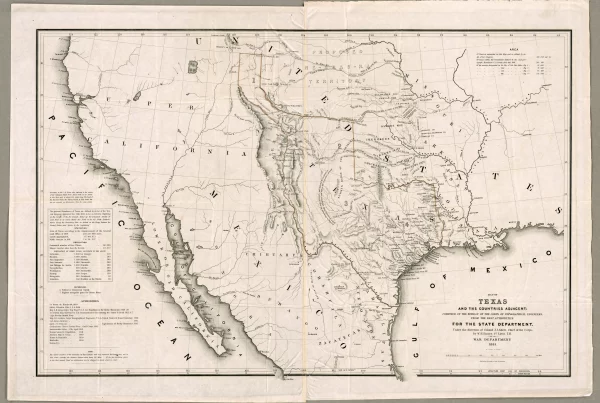The Tenth Amendment to the United States Constitution reads:
“The powers not delegated to the United States by the Constitution, nor prohibited by it to the States, are reserved to the States respectively, or to the people.”
This brief but foundational provision is often at the heart of debates over state sovereignty, limited government, and the boundaries of federal authority.
In Texas, where political culture has long emphasized independence and local control, the Tenth Amendment has been invoked in courtrooms, legislative chambers, and political rhetoric alike. Yet despite its frequent appearance in public discourse, the legal meaning and force of the Tenth Amendment are frequently misunderstood.
Origins: A Reaction Against Central Power
The Tenth Amendment emerged from the constitutional debates of the late 18th century as a formal statement of federalism. After gaining independence from Britain, the American states initially formed a loose confederation under the Articles of Confederation. That system proved too weak to govern effectively, prompting the drafting of a stronger Constitution in 1787. But many feared that the new federal government might become too powerful.
To address these concerns, the Bill of Rights was added shortly after ratification, and the Tenth Amendment was included to reassure states that their sovereignty would be preserved. It was meant to affirm a structural principle: the federal government is one of “enumerated powers” (i.e., specifically listed/detailed powers), and everything else belongs to the states or the people.
In Federalist Paper No. 45, James Madison wrote,
“The powers delegated by the proposed Constitution to the federal government are few and defined. Those which are to remain in the State governments are numerous and indefinite.”
He continued, “The former will be exercised principally on external objects, as war, peace, negotiation, and foreign commerce; with which last the power of taxation will, for the most part, be connected. The powers reserved to the several States will extend to all the objects which, in the ordinary course of affairs, concern the lives, liberties, and properties of the people, and the internal order, improvement, and prosperity of the State.”
“The operations of the federal government will be most extensive and important in times of war and danger; those of the State governments, in times of peace and security. As the former periods [times of peace] will probably bear a small proportion to the latter [times of war], the State governments will here enjoy another advantage over the federal government.”
Madison’s words were intended to convince early Americans that forming a federal republic had definite advantages (principally, collective security against external threats), without the need for surrendering local control or risking the creation of a new domestic tyranny, so soon after throwing off the yoke of a king, whom they had seen as tyrannical and distant.
Similarly, Thomas Jefferson, wrote in the Kentucky Resolutions in 1798:
“Resolved, that the several States composing the United States of America are not united on the principle of unlimited submission to their General Government.”
He continued, “But that, by a compact under the style and title of a Constitution for the United States, and of amendments thereto, they constituted a General Government for special purposes [i.e., the federal government],—delegated to that government certain definite powers, reserving, each State to itself, the residuary mass of right to their own self-government.”
Controversially, Jefferson went on to describe how federal overreach could be combatted:
“Whensoever the General Government assumes undelegated powers, its acts are unauthoritative, void, and of no force.”
“Each State acceded [to this compact] as a State, and is an integral party… the government created by this compact was not made the exclusive or final judge of the extent of the powers delegated to itself; since that would have made its discretion, and not the Constitution, the measure of its powers; but that, as in all other cases of compact among powers having no common judge, each party has an equal right to judge for itself, as well of infractions as of the mode and measure of redress.”
In other words, Jefferson saw States as continuing to have a degree of independence and sovereignty even after the Constitution, including the power to judge whether the federal government was respecting the terms of the original compact. His words would later be invoked in debates over nullification, secession, and state resistance to federal authority.
In effect, Madison and Jefferson characterized the U.S. constitution as a compact for guaranteeing the collective welfare and security of the states—not as charter for the erasure of the power of the newly independent “13 colonies.” Madison and other Federalists argued that the new federal government’s powers would be clearly limited in scope.
Madison conceded, however, that the “regulation of commerce” was a new and substantial power granted to the federal government. Over the years, that power became an increasingly important lever for extending federal regulation in areas like food safety, pharmaceuticals, banking, bankruptcy, copyright, control of the money supply, etc.
The economic complexity and interconnectedness of U.S. society today give the federal government a far greater role under the Commerce Clause than Madison or the other Founding Fathers ever envisioned. Even so, the spirit and letter of the original constitution put definite limits on federal power.
What the Tenth Amendment Does—and Does Not—Do
Despite its broad phrasing, the Tenth Amendment does not provide states with a blanket right to nullify federal laws or act outside the bounds of the Constitution. Instead, it functions as a rule of interpretation—an instruction to the courts that powers not listed in the Constitution should be presumed to rest with the states.
Federal courts, including the Supreme Court, have interpreted the Tenth Amendment narrowly in many contexts. In United States v. Darby (312 U.S. 100 (1941)), the Court stated that the Tenth Amendment “states but a truism that all is retained which has not been surrendered.” This meant that once the Constitution grants power to the federal government, even expansive exercises of that power (such as regulating commerce) are generally upheld.
However, there have been moments in U.S. legal history when the Tenth Amendment has been used to limit federal reach. One of the clearest examples is New York v. United States (505 U.S. 144 (1992)), where the Court struck down a federal law that compelled states to enact legislation for waste disposal, holding that the federal government cannot “commandeer” state legislatures.
Tenth Amendment Themes in Texas Politics
Texas has historically emphasized state sovereignty more than many other states. From its time as an independent republic to its frequent lawsuits against federal agencies, Texas leaders have often turned to the Tenth Amendment to challenge federal authority.
Some notable modern issues where Texas politicians or litigants have cited the Tenth Amendment include:
- Health care regulation, particularly Texas’s refusal to expand Medicaid under the Affordable Care Act (ACA).
- Environmental enforcement, where the state has clashed with the Environmental Protection Agency (EPA) over emissions standards and water policy.
- Gun regulation, with some officials asserting that federal firearms laws cannot be enforced within Texas if they exceed enumerated powers.
These cases typically involve complex legal questions under the Commerce Clause, Spending Clause, and Supremacy Clause of the U.S. Constitution. While the Tenth Amendment is often cited in public rhetoric, actual judicial decisions tend to rest on more specific constitutional provisions.
For example, the Commerce Clause (Article I, Section 8, Clause 3) allows Congress to regulate interstate commerce, and has been interpreted broadly to cover everything from environmental regulation to labor standards.
The Spending Clause empowers Congress to attach conditions to federal funds, such as requiring states to adopt minimum drinking ages in exchange for highway funding (South Dakota v. Dole, 483 U.S. 203 (1987)).
The Supremacy Clause (Article VI, Clause 2) ensures that valid federal laws override conflicting state laws. In each of these contexts, courts have upheld federal authority even in the face of state objections grounded in the Tenth Amendment—especially when Congress is acting within its enumerated powers.
Texas Cases and Statutory Frameworks
Texas courts and attorneys general have participated in numerous legal actions involving federalism questions. For instance:
- In Texas v. United States (809 F.3d 134 (5th Cir. 2015)), Texas successfully challenged the Deferred Action for Parents of Americans (DAPA) immigration program. While the ruling did not rest directly on the Tenth Amendment, themes of state standing and federal overreach were central to the case.
- Texas Government Code § 402.021 gives the Attorney General authority to represent the state in litigation affecting Texas’s legal interests, and this has frequently included federalism disputes.
Although state statutes rarely cite the Tenth Amendment directly, many aspects of Texas law—such as the regulation of insurance, education, and elections—are based on powers presumed to belong to the states.
Cooperative Federalism
Many areas of law operate on a model known as “cooperative federalism,” where both state and federal governments have a role. Examples include Medicaid, education standards, and highway construction. In these domains, the federal government offers funding to states that comply with certain conditions. This system has prompted constitutional debates when states argue that the federal government is effectively coercing them.
In NFIB v. Sebelius (567 U.S. 519 (2012)), the Supreme Court held that the federal government could not withhold all Medicaid funding from states that declined to expand eligibility under the ACA. While not purely a Tenth Amendment case, the ruling reinforced limits on federal power under the Spending Clause.
A Comparative Perspective: Federalism in Other Nations
Federalism exists in many democratic systems, but it takes different forms across countries. The U.S. model—where states possess constitutionally protected powers—is just one variation.
In Germany, for example, the Basic Law (Grundgesetz) establishes a system of cooperative federalism in which the Länder (states) implement many federal laws. However, the German Constitutional Court has recognized a clearer and more structured vertical division of powers than in the U.S. system, and intergovernmental coordination is more formalized through the Bundesrat (federal council of states).
Canada, by contrast, allows the federal government to disallow provincial legislation under certain conditions—though this power has fallen into disuse. Canadian provinces have greater control over health care and education, but the federal government retains considerable economic influence.
In India, the constitution formally gives more power to the central government, but significant autonomy is exercised by state governments in practice—particularly in areas like language, policing, and commerce.
Compared to these systems, the U.S. approach is unique in combining constitutionally protected state sovereignty with national supremacy on certain matters. While American states like Texas emphasize independence, they also rely heavily on federal funding and infrastructure, creating a continual push-and-pull dynamic not always seen in other federations.
Federalism in Everyday Life
Although federalism is a legal doctrine, it affects ordinary life in profound ways:
- Public education systems are primarily state-run.
- Most criminal prosecutions happen under state law.
- Family law, property law, and contract law are governed almost entirely by state statutes.
The federal government’s powers are significant, but specific. Most daily governance occurs at the state and local level, reinforcing the importance of understanding how authority is divided.
Foundational Principle of American Government
The Tenth Amendment is not a magic shield that allows states to disobey federal law, nor is it a mere historical footnote. It is a foundational principle of American government that shapes how power is distributed between the national and state levels.
In Texas, the Tenth Amendment carries particular political weight—but understanding its legal force requires moving beyond slogans. The amendment reflects an enduring tension in American constitutionalism: how to maintain both unity and local autonomy in a federal system.




